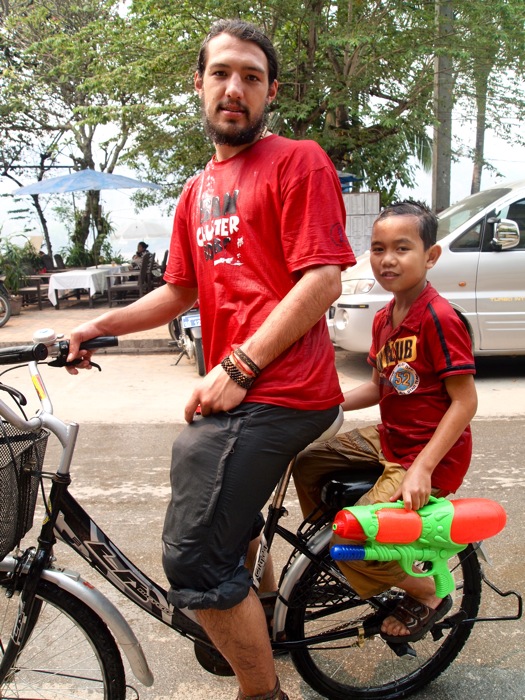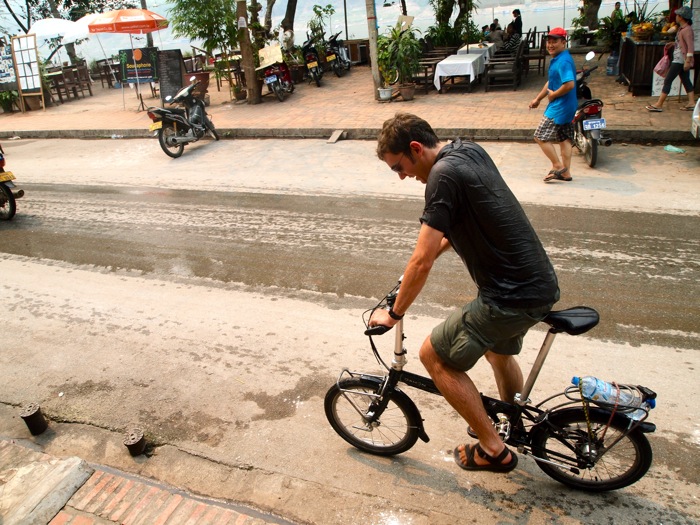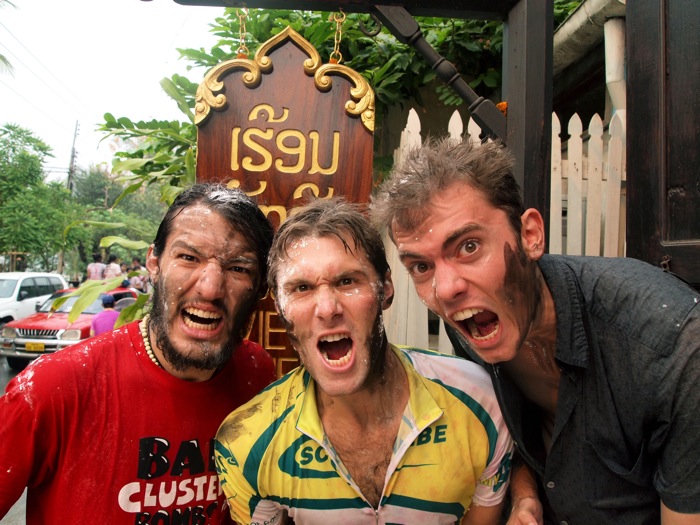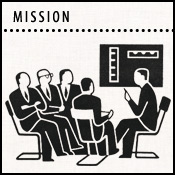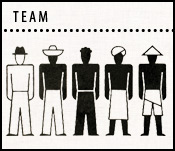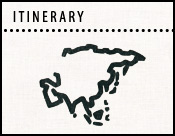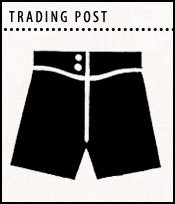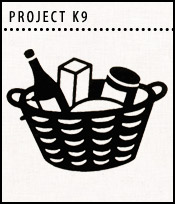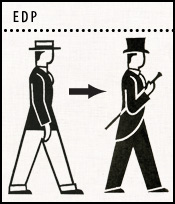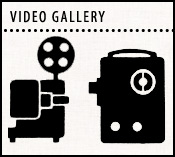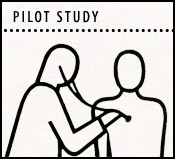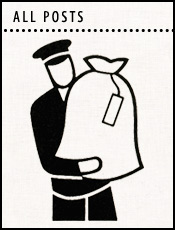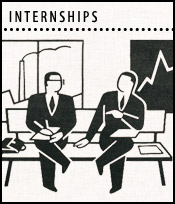May 26th, 2010
Cambodian K9
We woke up bright and early on our first full day in Phnom Penh. We began the day by enjoying the delightful in-room coffee service at the Amari Watergate, and with the beginnings of a proper caffeination well underway, we headed out onto the brightly sunlit and bustling streets of Phnom Penh.
We headed first in the direction of a local market called the Russian Market, so named because (rumor has it) back in the day, it was where all the Soviet expatriates used to shop. We stopped on the way at a rather down-home little street corner Cambodian diner.
We ordered a bowl of rice noodle soup, a bowl of nice salty, thick rice porridge, and a Vietnamese dish of what looked like raw ground pork, pickled in a kind of sweet soy sauce. This was accompanied by a couple of crispy pieces of baguette. All in all, a magnificent breakfast.
From there we managed to somewhat circuitously find our way to the Russian Market, by way of a great many similarly gigantic markets, all specializing in everything from automotive components to vegetables.
When we finally found ourselves at the Russian Market, we did our best to lock the cycles securely to a nearby lamp post, and headed in. We were completely blown away by the things we encountered inside.

A vile of cobra liquor proved enticing, though we opted to pass at the moment.

And while we did find some interesting decommissioned Cambodian currency that we could not resist throwing into the K9 purchase, we were unable to locate any Cambodian military surplus. We stopped in the middle of the market at a sign advertising the best coffee in Phnom Penh and had another cup before getting back on the cycles to explore deeper.
The next place we found ourselves was Orussey Market. Orussey is a giant sprawling complex of goods sellers, spanning many floors of a giant warehouse that was once part of the Khmer Rouge’s feeble attempt at organized industry.
We made our way inside and were instantly immersed in a world of color, smell and sound that was so saturated and engrossing that it threatened to completely erase our current mission to find Cambodian military surplus from our minds. For what must have been close to an hour we wandered endless tiny walkways between giant market stalls.
While this market had proven once again quite the fascinating waypoint, we had yet to see even one piece of Cambodian military equipment. Finally, in the middle of one of the giant textile sections (this one was I believe dedicated to brand-name-knock-off duffle bags), we decided to elicit some help from the locals. You see, dear reader, since we speak no Khmer, and are traveling in a country with quite the war-torn past, we had been reluctant to delve into a pantomime about military surplus. But it was past noon now, and we needed to get this show on the road. After communicating with one shopkeeper who called over another, who called over his daughter, who spoke a bit of English, we were finally able to get the point across. One of the shopkeepers wrote down the name of a market for us on a piece of paper where he assured us we would be able to find the treasure.
We asked him to show us on the free tourist map we had procured thanks to Vicious Cycle. He shrugged. Another shopkeeper then came over to us to try to assist, but her communications too were just vague waves at the map. We decided this likely meant it was too far away to be shown on our map of central Phnom Penh, and bid everyone our very best regards before venturing back out into the world.
We headed toward the market, initially missing a turn that brought us to a giant round-about. In the center of the round-about was a great statue of a revolver pistol, with the barrel of the pistol tied in a knot.
From there, we backtracked a bit past the French and Cuban embassies, and got back on the correct road. We took this road for quite a while, stopping from time to time to show the piece of paper on which the shop-keep had written the name of the market, confirming the validity of our trajectory. Except, as you are no doubt already aware, proof of validity is only as good as the mouth that spits it. And it seems some of the people who we talked to were either in cahoots to send us deep into the middle of rural Cambodia, or of a mind to save face and just wave us on our current trajectory rather than admit they did not know the way.
Regardless, we found ourselves quite suddenly ravenously hungry in the middle of nowhere near a long stretch of used truck lots on the outskirts of Phnom Penh. Food was nowhere to be found. Then suddenly we passed a frighteningly American looking gas station complete with a little convenience store inside. We decided that this would just have to be lunch. So we selected from the puzzling assortment of overpriced snack food, and sat down to eat.

It was not the tastiest meal of AsiaWheeling, not by a long shot. But it did the trick, and for that we were both quite grateful. Not another customer came in the entire time we spent there selecting foods and eating them. So in the process, we became quite close with the man running the cash register. He was a young Cambodian fellow, and appeared to be quite proud of and dedicated to his job. The amount of care and effort that he put into microwaving our individually wrapped hot dogs, and artfully dressing them with mayonnaise and chili sauce, was quite touching.
Such an experience really highlights the emerging view of AsiaWheeling that Cambodian people share a fair amount with the people of Lao in the kindness-in-the-face-of-historical-hardship-and-mistreatment department. I dare say most Cambodians have quite a few decent reasons to dislike outsiders and avoid connecting with them. However, we experienced quite unreserved kindness in the vast majority of our encounters with strangers. A fine type indeed.
We loaded up on more water before bidding our dear convenience store worker goodbye, and heading back onto the road. This time we asked a cluster of traffic police for directions. They were most helpful, and lead us back a few kilometers where we found a somewhat hidden market off a side street.
The mall was mostly full of small tailoring operations. We parked the Speed TRs outside of one of these, and a beautiful young woman speaking excellent English emerged from the shop and offered to watch them for us. We thanked her, and headed into the market.
The interior consisted of a great many small winding crumbling streets lined with many small shops. Most of them were a few tables with sewing machines on them, backed by a crew of Cambodian men and women, cranking out military and police uniforms. Behind the sewers were examples of the types of clothes they could make, reams of blue and green fabrics, and giant boxes of patches.
It seemed that Cambodian military and police units had to have their own uniforms made, rather being issued them from a central source like in the U.S., for all around us were police officers and military types selecting garments, packs and satchels, belts, patches, hats, equipment and the like.
We wandered on through the market, taking out time to inspect various goods. What was perhaps most amazing was that fact that most of the military-type clothing was actually made with little (obviously fake) tags and labels indicating it was the property of the U.S. army. For one reason or another (and I would invite speculation in the comments), the Cambodian military was outfitting itself with a fair amount of fake U.S. military equipment. Perhaps the fake U.S. military labeling would be removed when the Cambodian patch or embroidery was selected?
As we walked along, a woman caught my eye as I was inspecting a number of belts she had on display. She was removing something that looked like a early 2000s brick cell phone from a black canvas carrying case. As she removed it and brought it toward me, I became more interested. Was it a cell phone? Or perhaps a rechargeable battery of some kind? I put my face a little closer. She then pressed a button on the side and a giant arc of electricity burst between two metal contacts on one side. Along with the arc came a haunting sizzling noise that sent a rush of chills up and down my spine. I hopped back in surprise and fright. It was a very large and scary taser.
She giggled at my response and apologized for scaring me. She explained that I could buy it for $20 if I liked. I declined, attempting to be both polite and to indicate that I completely abhorred such devices.
Finally, we selected a number of items from the market (a small, cell phone-sized equipment pouch, a kind of military fanny pack, a belt, a mosquito hammock, and an embroidered military hat) and a number of patches. With these we returned to our friend, who had so kindly watched the Speed TRs for us while we were shopping.

We asked her whether her shop could apply these patches and embroider the top of the fanny pack to customize them for Project K9.

This she arranged for us at great speed and astonishingly tiny expense.

Thanking her most heartily, we took our belongings and headed for the post office. Part way through the ride, we noticed the sun was sinking low, and realized the post office would most certainly be closed by this point.
So instead we wheeled Phnom Penh aimlessly until we found a street restaurant full of people squatting on tiny red plastic stools and eating what looked like garlic bread, fried meat and cole slaw.
And sure enough, this was more or less what the restaurant served. There was no menu, but we were able to communicate our wishes pretty easily, since everyone was eating the exact same thing. It was delicious and markedly different from anything we had eaten to date. There was even a kind of baked-beans-esque condiment that accompanied the bread. I might even dare say this meal shared more in common with down-home Iowa cooking than any we had hitherto discovered in Southeast Asia.
Quite satisfied, we headed back to the Hotel Amari Watergate to get a little rest. Having not yet sent the package off for K9, we were still behind schedule for Phnom Penh, and tomorrow would need to be a sprint to the finish line. Phnom Penh was treating us well though, and we had every reason to believe the pieces would fall right into place.
![]()

















































































































































